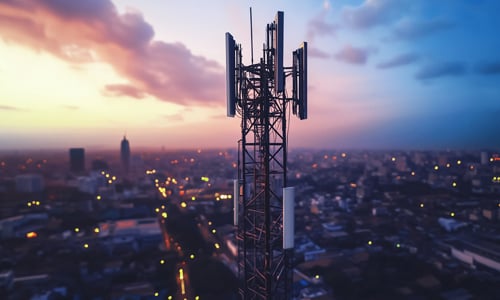Exponential Growth of Internet Connected Devices
The number of devices that can connect to the Internet is forecast to increase to 9.6 billion by the end of 2012 according to IMS Research, recently acquired by IHS Inc. (NYSE:IHS). The company, which tracks the installed base of Internet capable equipment, believes that the third wave of connected device growth is accelerating, and this will drive further growth in the connected device market, leading to its forecast of 28 billion Internet connected devices by the end of 2020.
This incredible explosion in the number of connected devices is bound to put additional strain on the telecommunications networks that support these devices. Although most consumers don’t think about it, when a communications session is initiated, the network must be aware of the location and address for each of the connected devices implicated. It is difficult enough to contact local, fixed-location devices on a single provider’s network; it is even more complex to keep track of billions of mobile devices that move freely around the globe on any of the world’s network providers. Therefore the number of messages that pass from end user device to network and between network elements is growing exponentially. To manage this on a global scale, standard protocols and architectures exist but the advancements of each element are not always coordinated or bug free.
Over and above making the connections, the actual content that is transmitted is growing even faster, according to the annual Cisco® Visual Networking Index (VNI) Forecast (2011-2016), the company's ongoing initiative to forecast and analyze Internet Protocol (IP) networking growth and trends worldwide. As can be seen from the chart below, video and large file-transfers such as photos and internet traffic in general is growing exponentially.
Another dimension to this is associated with the dynamic nature of the traffic flow due to events and mobility. In many places networks need to be substantially overbuilt to deal with popular events that attract people or traffic. For example, the recent Olympics in London, UK drove up traffic by at least 4,000 % in the area of the games. Popular sports, entertainment and news events can drive traffic to a particular service or website. In addition to traffic increase is the aspect of importance and personal dependency on the data. The Internet, and especially mobile communications, has now permeated everyday life. In many countries mobile payments are now commonplace. Around the world police and emergency services are depending more and more on commercial cellphones, access to buildings, business communications and many other aspects of communications now depend on Internet connectivity. This puts additional pressure on service providers as down-time is no longer tolerated by consumers and now regulatory bodies.
To deal with these incredible trends the world’s network providers are forced to build the capacity of their networks. In general this means more cell sites, backed up with additional fiber connections that must transport higher and higher rates of traffic over higher capacity routing, signaling, processing and storage elements.
How Does EXFO Help in these Expansions?
EXFO offers portable testers that are used to test and troubleshoot fiber-optic cables and systems when they are first installed or whenever a faster service is deployed. EXFO also provides tools that test the performance and long-term stability of packet flows through the complex Ethernet and other types of transport networks. The company also offers solutions for testing the various protocols used in wireless and wireline communications and in fact provides large capacity simulators that bombard network elements and the software solutions that drive them with huge simulated traffic loads. Once networks are fully up and running, EXFO provides 24/7 monitoring solutions to ensure quality of service.




